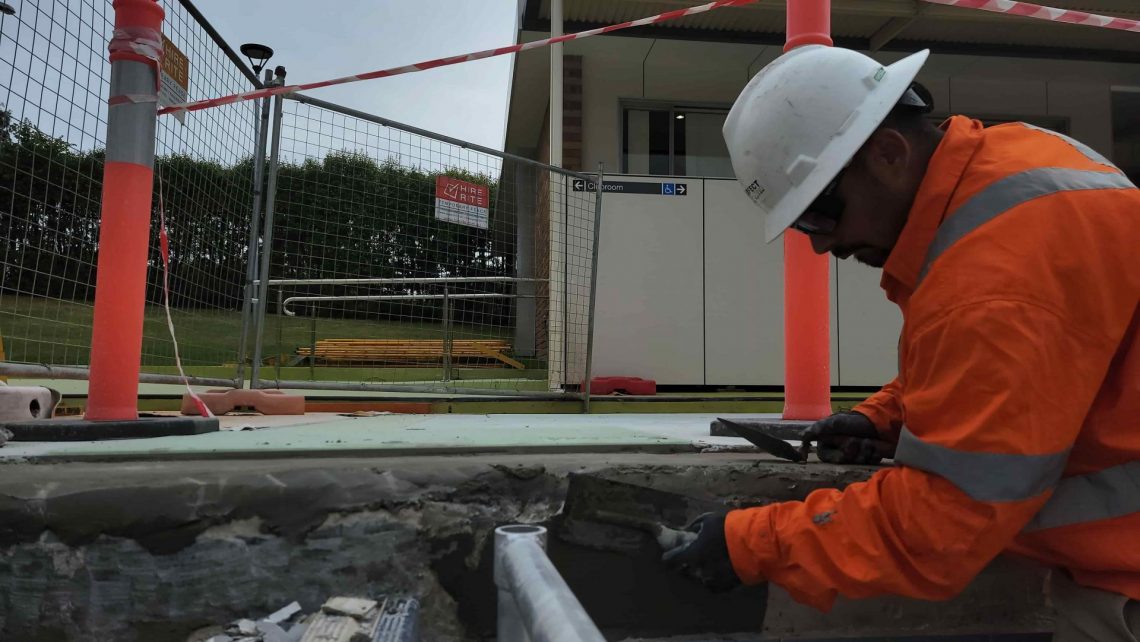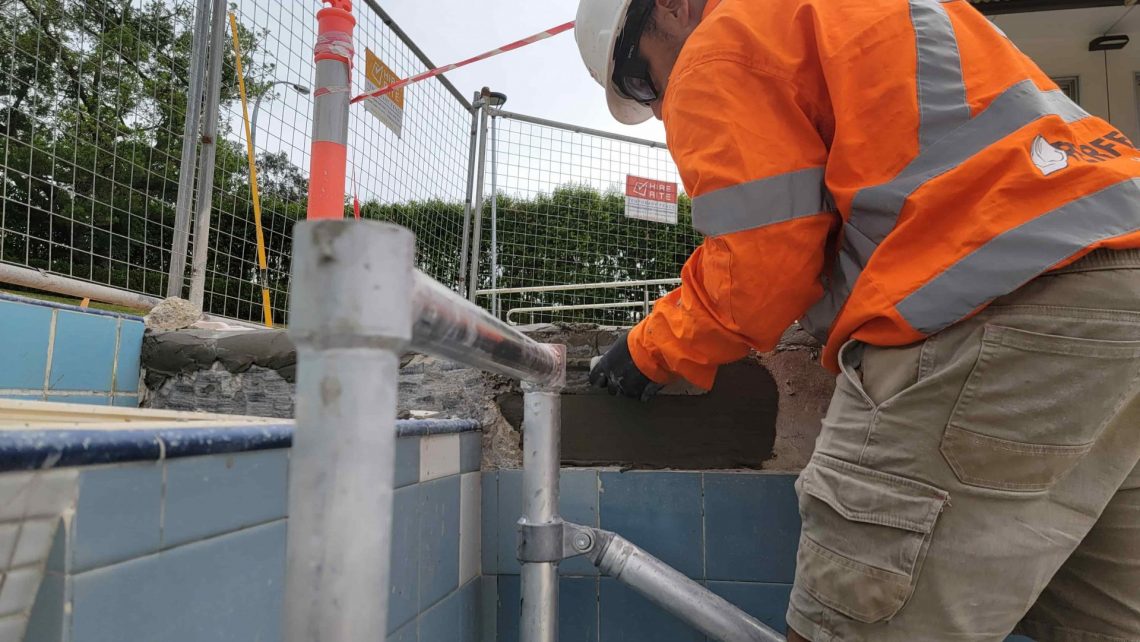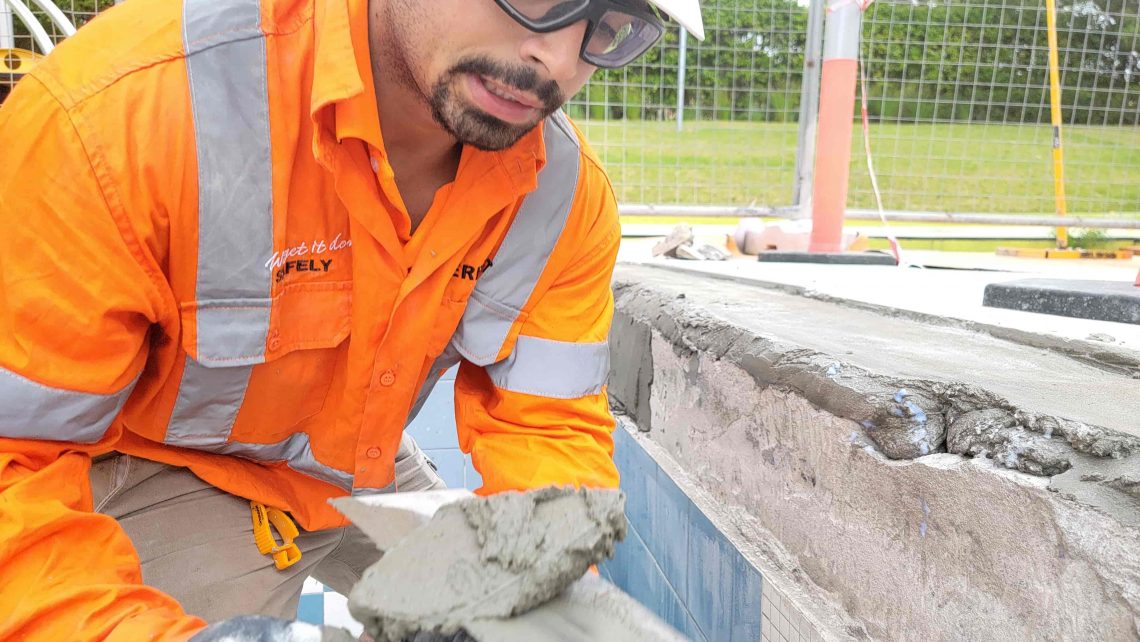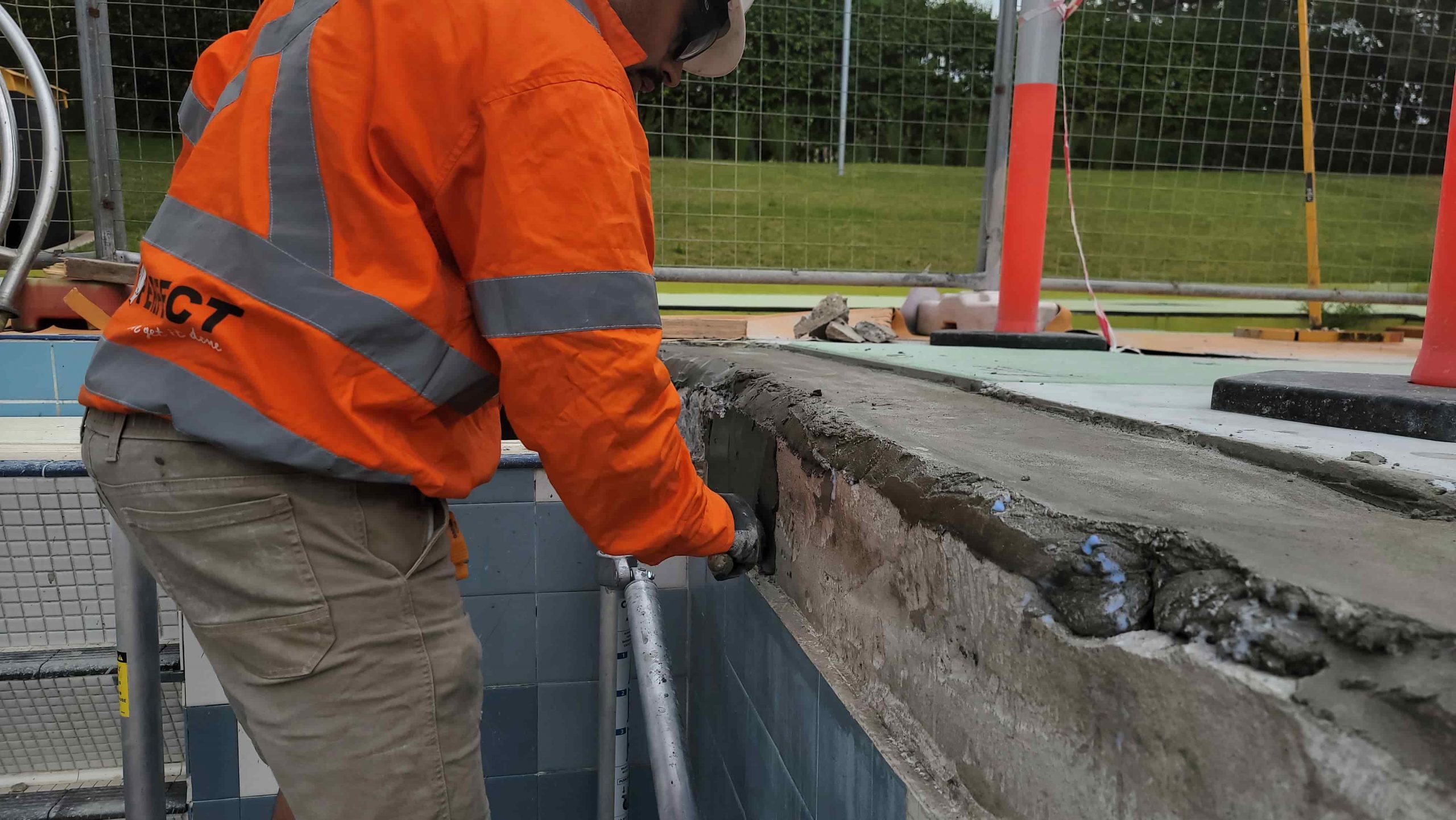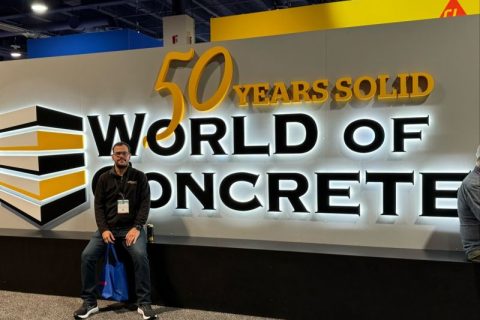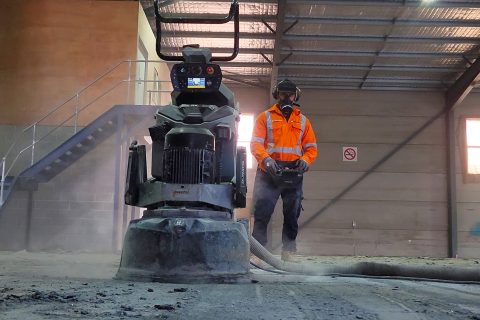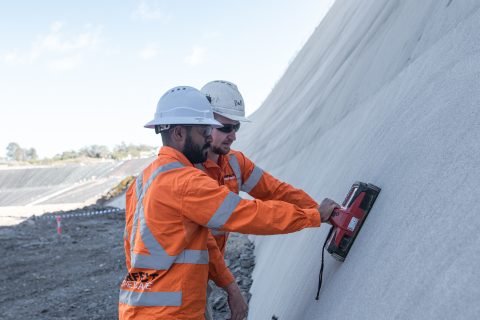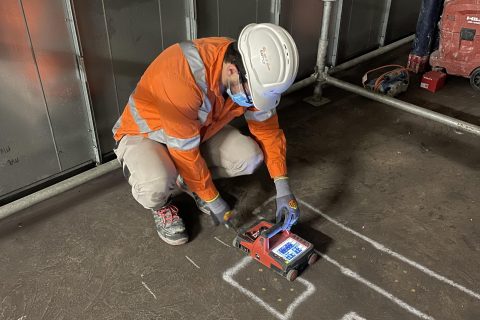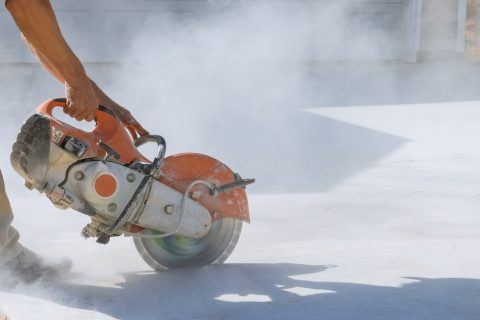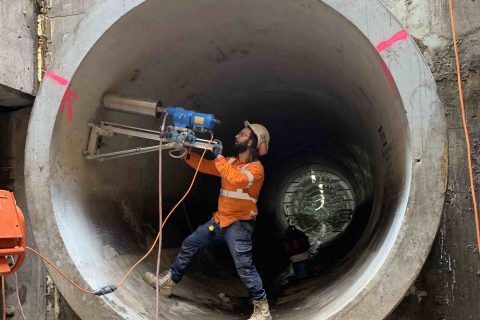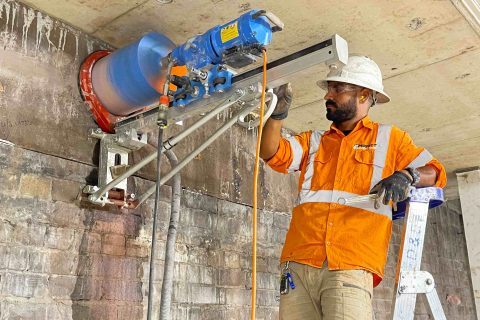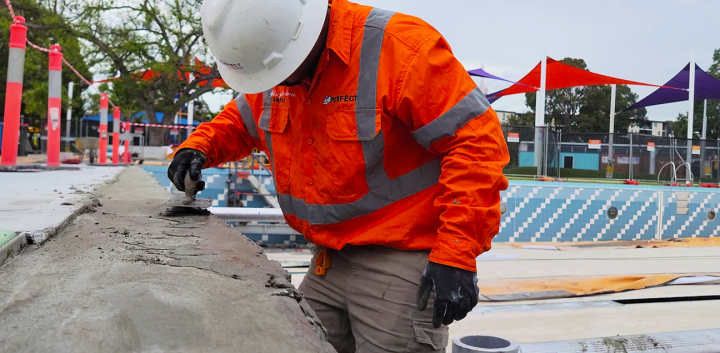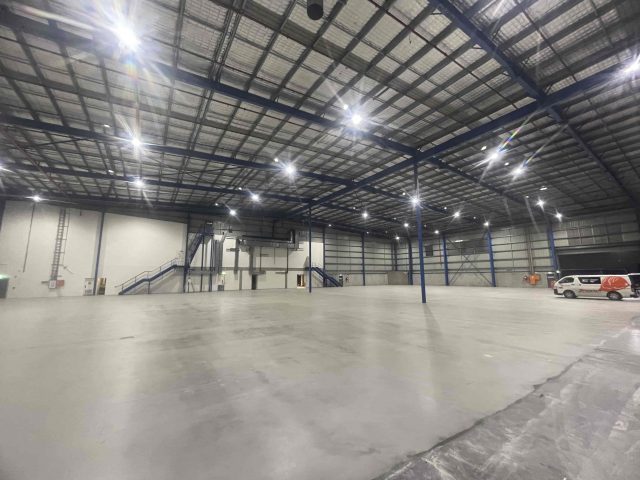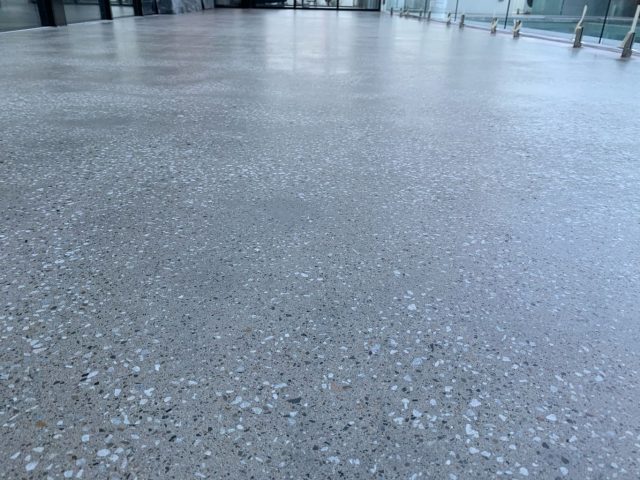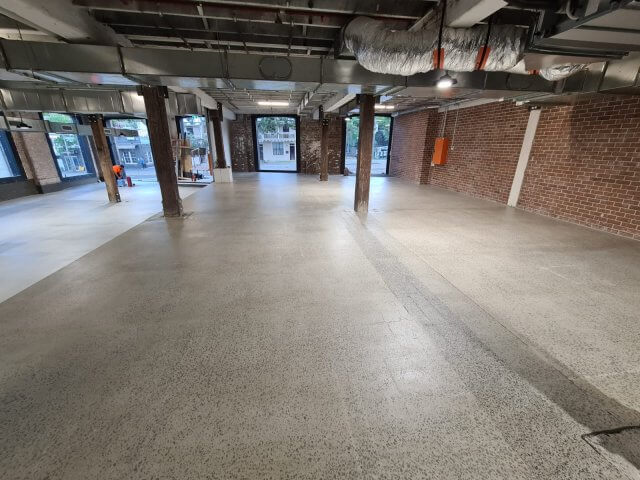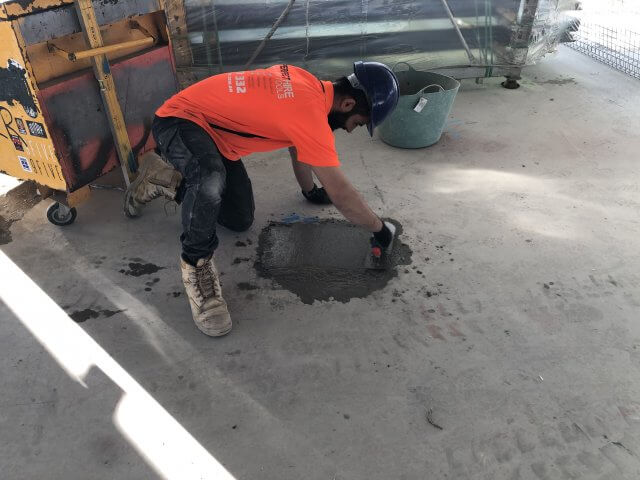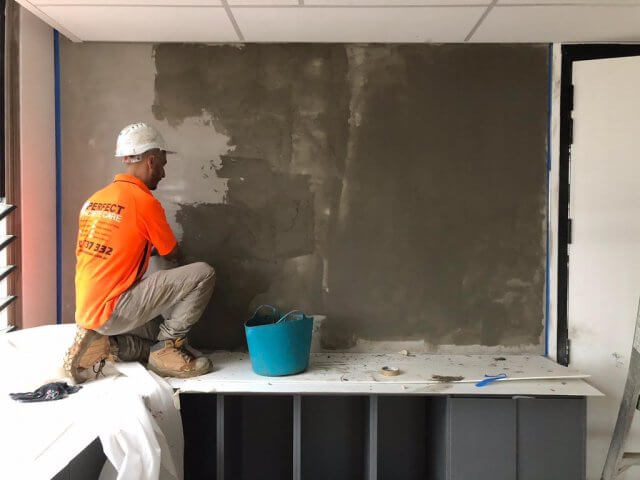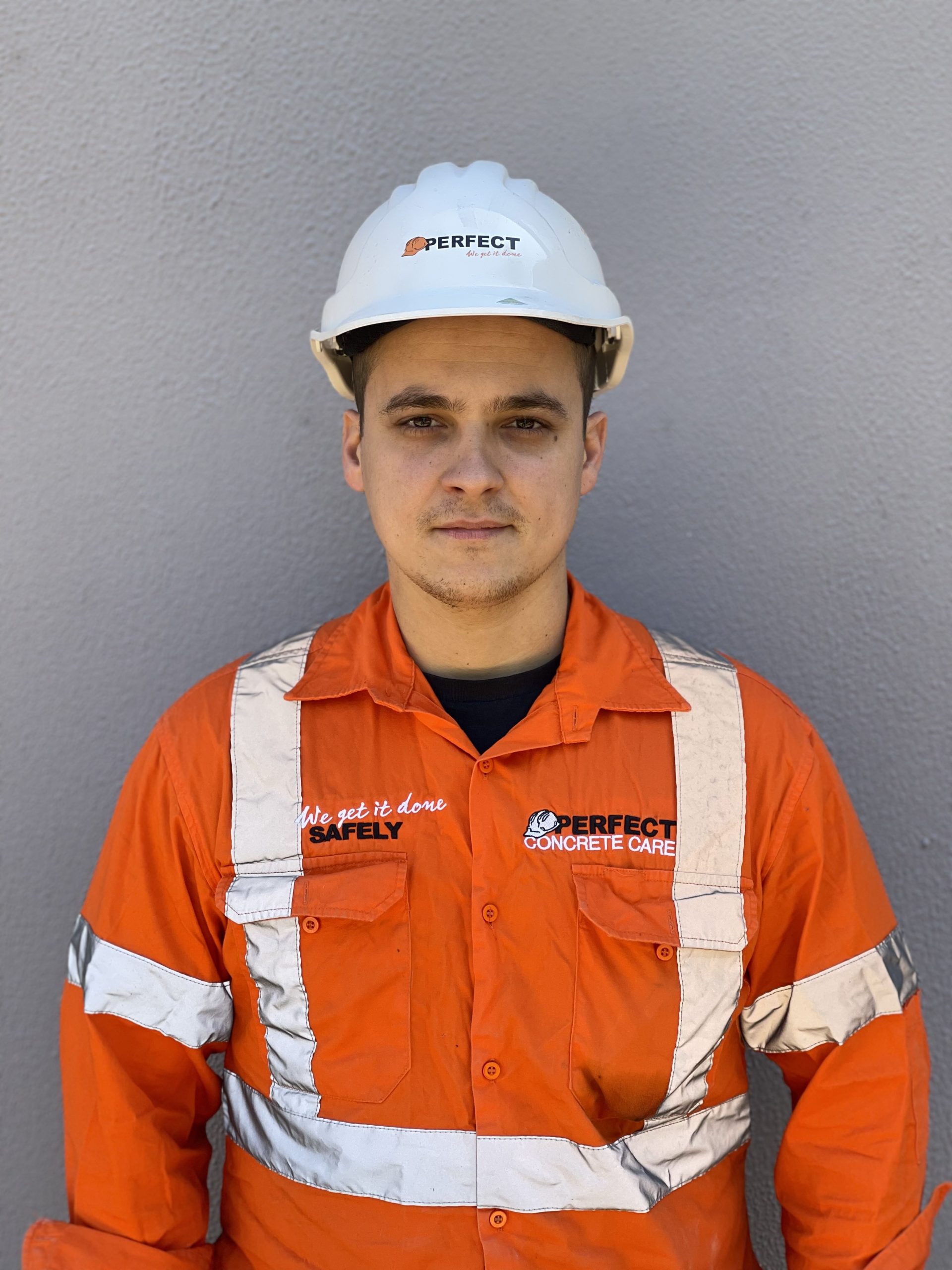by Daniel Green
Concrete patching is a bit of an iceberg scenario – we only see the 10% that lies above the surface. With luck, this is might be one of those reads where you walk away with a new appreciation for concrete patching repairs! So don your drysuit, grab your trowel & bucket and adjust your oxygen. Time to dive deep into the frigid, iceberg laden waters of concrete patching and repairs.
Just What Is It?
There’s no mystery behind the title. The same as patching a flat tyre, concrete patching is literally repairing concrete with patches. But just because the title is self-explanatory doesn’t mean the work is. There’s scores of traps to fall into from poor prep to substandard products to inadequate application.
Why Patch in the First Place?
There’s many reasons.
It was planned.
Some formwork is assembled in such a way that patching holes are just part of the process. Freestanding lift shafts are a great example. Because of their design they need internal and external shutters assembled in multiple stages. Tying them in to support the weight of high MPA concrete requires hundreds of z-bars through conduits built into the slab. Once the formwork is disassembled the conduits remain and needs to be patched, for both aesthetically and for the integrity of the structure.
Flaws during construction.
Even the best concreters can’t ensure a perfect result every time. Most pours will need more than one agi, so even if the batching plant is paying close attention to the run there will still be variations in the mix. These inconsistencies can sometimes mean differing tolerances across the pour which, in some cases can result in flaws once the formwork has been stripped out. Damage can also occur during deshuttering.
Design.
Engineers make mistakes, just like the rest of us. If the layout isn’t sound or the formwork is extremely intricate and/or complicated then a flawed pour can be the outcome. The result of this is either breaking out and starting again or patching.
Age.
Believe it or not, concrete has a service life of approximately 60 – 80 years. Like everything else it is subject to decay. When it has begun to reach the end of it’s intended lifespan, with proper assessment, products and techniques its shelf life can be extended.
Mechanical stresses.
Concrete is hardy stuff, but its weakness lies in its brittleness. It cannot survive impacts or torsional loading like timber or metal – the outcome of which is cracks, chips and eventually total breakdown. Other causes included here are seismic and blast stresses as well as overloading.
Climates.
Due to the expansive and contractive movement under extreme temperature variations, concrete can fracture to the point of needing repair. This is most apparent where the structure has an extreme daily temperature cycle.
Chemical/biological damage.
Some environmental conditions are extremely abrasive. Acids can eat away at the surface of concrete to the point where it can need major work. Similarly, bacteria can render concrete unserviceable.
Wear and tear.
Even concrete is susceptible to erosion via overuse. If you take a close look at the Kangaroo Point stairs in Brisbane, Qld you’ll see the treads are concave due to the sheer quantity of foot traffic.
Insufficient reinforcement.
If the volume or arrangement of rebar wasn’t up to spec or the spec was wrong, the slab may need minor breaking out, reinforcement and patching.
Fire damage.
How can concrete burn? It contains trapped air which expands under the extreme heat generated by fire. Eventually it explodes. The Great Fire of London in 1666 saw St. Paul’s Cathedral almost entirely demolished because of exactly this.
The Concrete Patching Process.
PREPARATION.
Successful patching is very procedural. Offending material needs to be removed via mechanical means: jackhammer or HPWJ demo. Once a solid base has been exposed, any corroded rebar will need to be returned to a bright state and coated with a zinc rich primer to prevent future corrosion. Once this has cured, any impurities need to be neutralised. Dust will need to be vacuumed/blown away, chips of concrete will need to be removed, oil and grease needs to be washed away – essentially the concrete needs to be thoroughly cleaned.
FORMING.
If formwork can be easily constructed now is the time to do it. It will save hours of fighting gravity to keep your mortar in place.
PATCHING.
Concrete is inherently hydrous so when the surface has been throughly prepped it needs to be wet down to help binding. Moistening it with a sponge is probably the best method as it prevents overwatering. With the mortar mixed to an appropriate consistency, apply it with a metal spatula with firm, even pressure. The aim is to squeeze it into all the cavities left by preparation. If the patch is too wide or too deep to adhere in one application it may need several. Don’t force this or you will be chasing your tail for hours. Mortar is something that can be easily overworked, so patience is key. The best end result is for the patch to be proud of the surface by half a millimetre.
Once the patch has fully cured, strip any formwork. With a good eye on your handiwork, finish work can begin. This is the process whereby you try and make the patch blend into its surroundings. An experienced patcher should be able to match colour and consistency although some base material just cannot be matched. Sanding the patch flat with a torture board will yield the best results.
Concrete Patching Products.
The depth of the patch/es will determine the product. Realistically, a patch deeper than 2” isn no longer a patch – it’s a pour. However, products like Surecrete claim a 4” patch is feasible when mixed with aggregate. Generally speaking though, products like Renderoc HB40 are more than enough.
Tips and Tricks.
COLOURING.
There’s a reason concrete is nicknamed ‘mud’. At its base level its basically earthen material and water. This means that other earthen material can be added in order to change the colour to help blending.
STRENGTHENING.
If the concrete needs to be repaired because it’s in a high traffic area, merely filling the area with mortar may just be a short term fix. As long as it’s not structural and needs engineering sign off, any reinforcement will be better than none. Drilling and setting rebar or mesh will add tons of strength. It could be more difficult to apply the patch but the end result will be far superior.
ADHESION.
This will surprise many folks but PVA wood glue [polyvinyl acetate] can be added to almost anything thanks to its adhesive properties. Again, this is more home repair than tier one structural spec, but the science is sound.
FINISHING.
- Concrete may be hard but metal is harder and the sharp corner of your spatula may be working against you. Rounding the corners with an angle grinder is a good solution. Having each side with a different radius is an even better solution.
- Using a plastic spatula in conjunction with a metal one will help too. Flat patches can be shaped with a timber 30cm ruler because it has a bit of give in it without compromising its straight edge.
- Keeping a bucket of water and a sponge close by will allow you to clean up excess mortar while it’s still wet.
The Difference Between Concrete Rendering and Concrete Patching.
Patching is repair work over a generally smaller area. Rendering is an often decorative finish applied to larger areas like entire walls.
Patch in.
Perfect Concrete Care specialises in concrete patching amongst other things. To pick our brain on your patching repair, please call Jaro on 0414 902 112.
